When you don’t have any gutters or want to replace your current ones, gutter alternatives are an excellent option. You’re not obligated to stick to the typical pattern, as I will show you up to ten alternatives most of which have a better curb appeal.
You can consider different drainage solutions if you don’t like how gutters look or would rather have one less likely to clog. In some cases, gutter alternatives are cheaper than gutters.
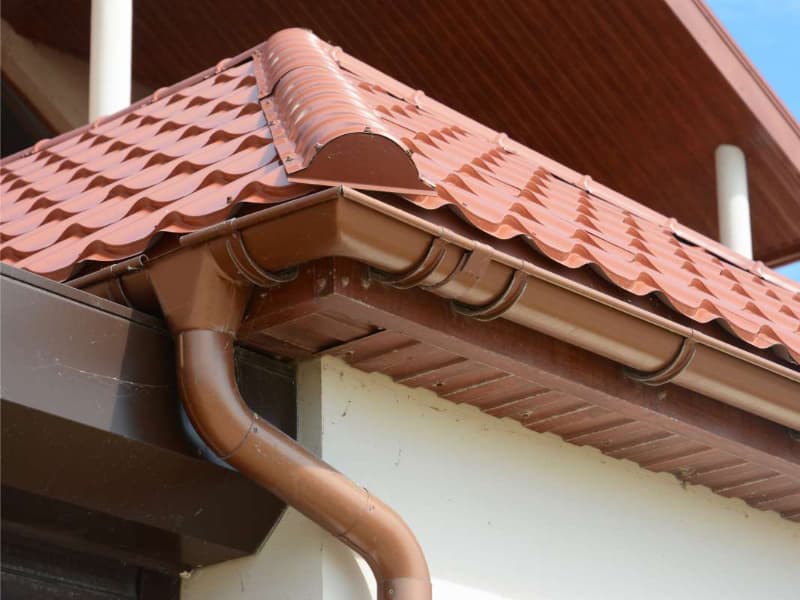
Best rain gutter alternatives
Although installing rain gutters on your home is a good idea, a few gutter alternatives can accomplish the same while being more advantageous. Here are a few I’ve studied and found to be good gutter alternatives:
| Gutter Alternative | Main Attraction |
| Rain chains | Curb appeal and flexibility |
| Drip paths | Curb appeal and safety from water damage |
| French drains | Curb appeal and efficiency |
| Drip edges | Wall protection from water damage |
| Rain dispersal system | Wall protection and lawn irrigation |
| Copper gutters | Curb appeal and longevity |
| Yard grading | Curb appeal and water protection |
| Box gutters | Sturdiness and longevity |
| Rain barrels | Water storage |
| Buit-in gutters | Curb appeal |
1. Rain Chains
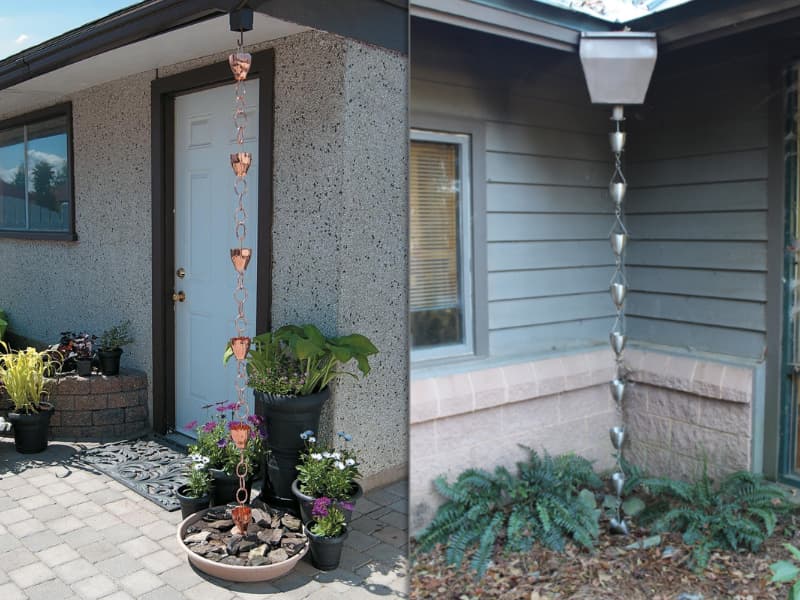
Rain chains are attached to the edge of your roof to collect rainwater. There are many designs, but most include a row of ornate cups joined together by chain links. The chain connects your roof to the ground. Your roof’s rainwater should flow down the chain and collect in the cups.
Because of their endurance, rust-proof copper chains are popular, but you can also buy rain chains made of coated iron, aluminum, or steel.
You can link your rain chains to an underground drainage system and direct the water farther away if your location gets heavy rain. If you pick an underground rain chain system, you can choose one without cups.
2. Drip Paths
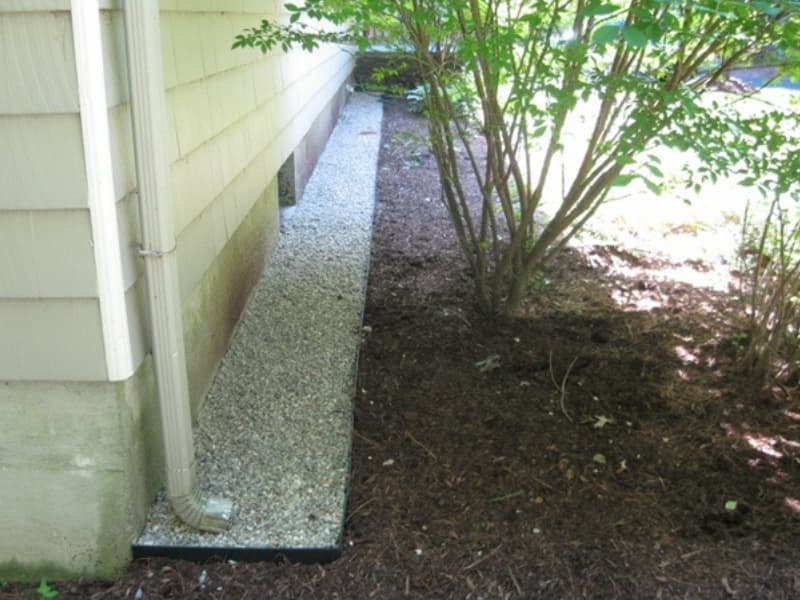
Large blocks, pavers, or other solid surfaces positioned in the ground beneath your roofline and angled away from your foundation make up a drip path. The blocks’ angle will assist in channeling water away from your house. Drip paths can be installed independently in plastic, concrete, or metal varieties.
A drip path is a beautiful way to ensure that all water dripping from a home’s roof swiftly flows away from the foundation without harming the house or eroding the soil when constructed correctly.
With a drip path, you still need to choose the type of gutter on your roof since it doesn’t work without gutters. However, I consider it an alternative to the gutter due to the way it handles rain water.
3. French Drains
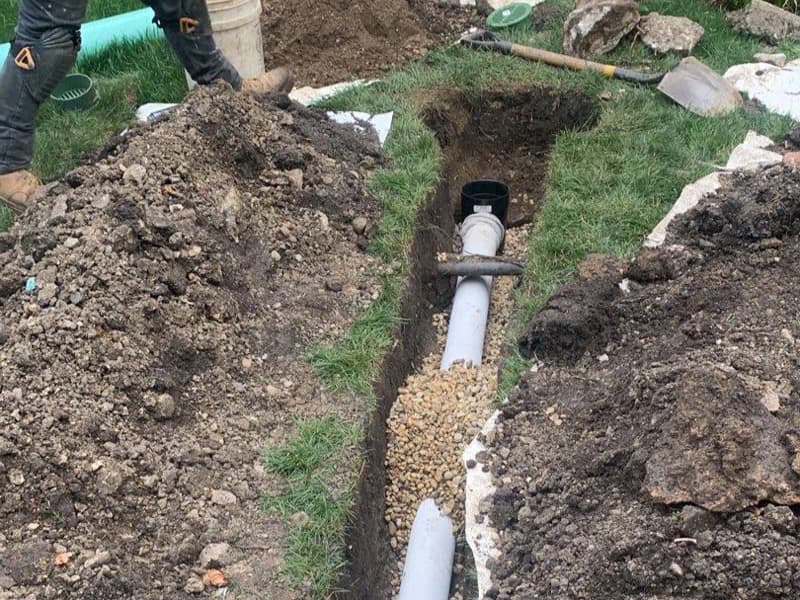
If you don’t want your home’s curb appeal negatively impacted by unattractive gutters, a French drain or ground gutter is perfect. Ground gutters are installed underground along the border of your home to collect water and direct it away from the foundation.
PVC or plastic perforated pipe is typically used to construct this drainage system. Ground gutter installation is best left to the experts because it requires a lot of work.
4. Drip Edges
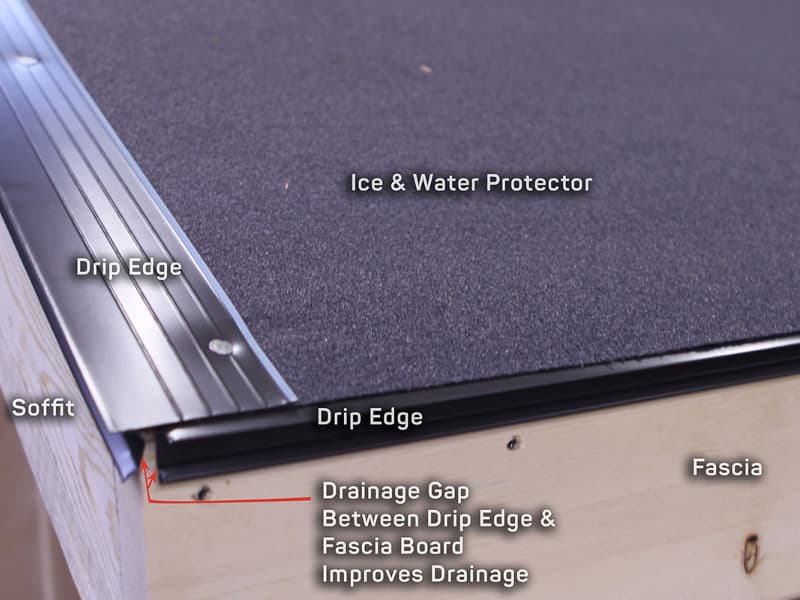
Drip edges are metal-strip attachments connected to your roof’s edge to serve as an additional barrier that lessens the power and speed of the water’s descent. They also prevent water from coming too close to your walls.
Drip edges are put between the shingle and the roof deck to stop water from penetrating into the wood beneath the shingles. Drip edges prevent water from splashing on the side and ruining your walls by coloring them, introducing mildew, and protecting the foundation.
5. Rain Dispersal Systems
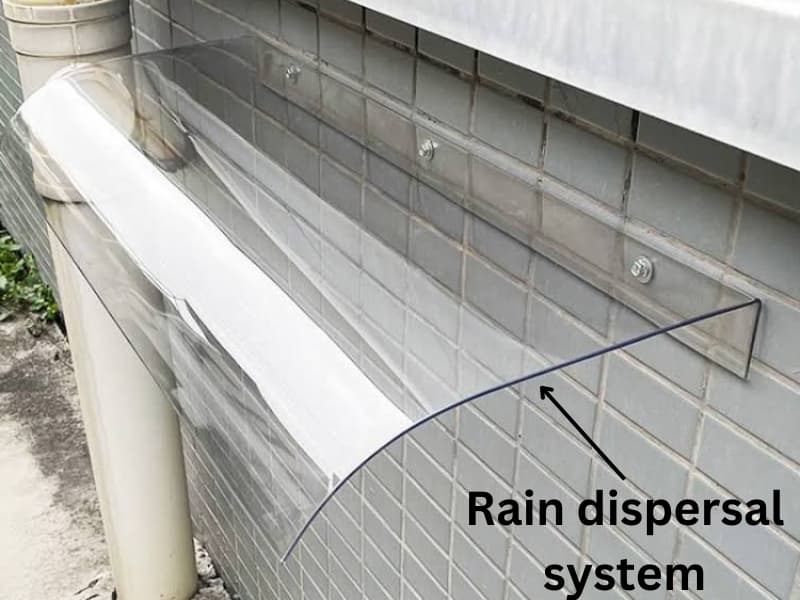
A practical approach to moving rainwater away from your home and into the ground is using a rain dispersal device, like a Rainhandler. This system uses curved louvers at the roof edge to release rainfall into your yard rather than collecting it and sending it to a downspout.
The louvers divert the water from your property as raindrops fall from the roof and land on the rain dispersal system. The water then falls to the ground and soaks into your grass, plants, etc.
Your landscaping and foundation are protected from water damage and you get to water your lawn for free with this system. However, if you use a metal louver, it will be noisy for your house.
6. Copper Gutters
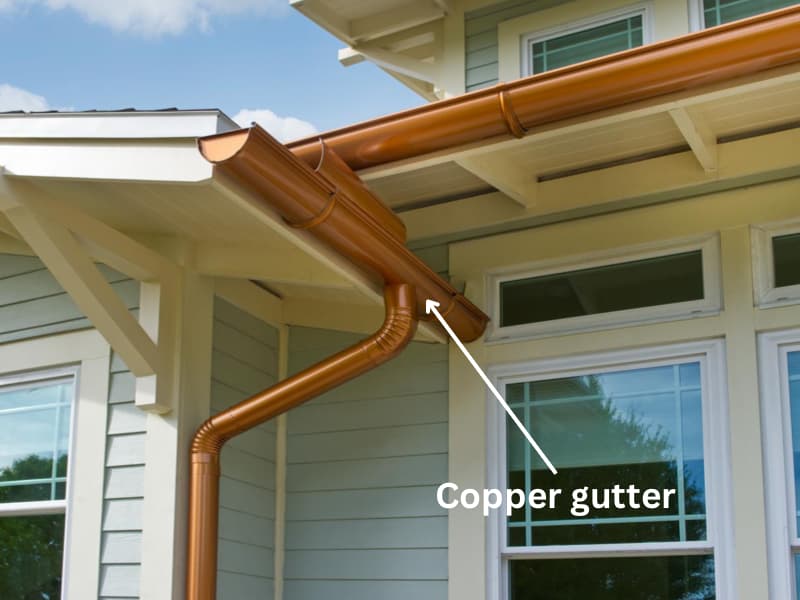
Though technically still considered gutters, copper gutters differ significantly from conventional aluminum gutters that they deserve their own classification. This is because their distinctive appearance increases any home’s curb appeal.
While they are costlier than aluminum gutters, copper gutters have several advantages.
- First, they are stronger and, with proper care, will survive for decades.
- Second, they require little upkeep and are simple to clean and corrosion-resistant.
- Thirdly, copper is a stunning metal that gives any house a sense of sophistication and beauty.
They are thus better gutters than the aluminum ones.
7. Yard Grading
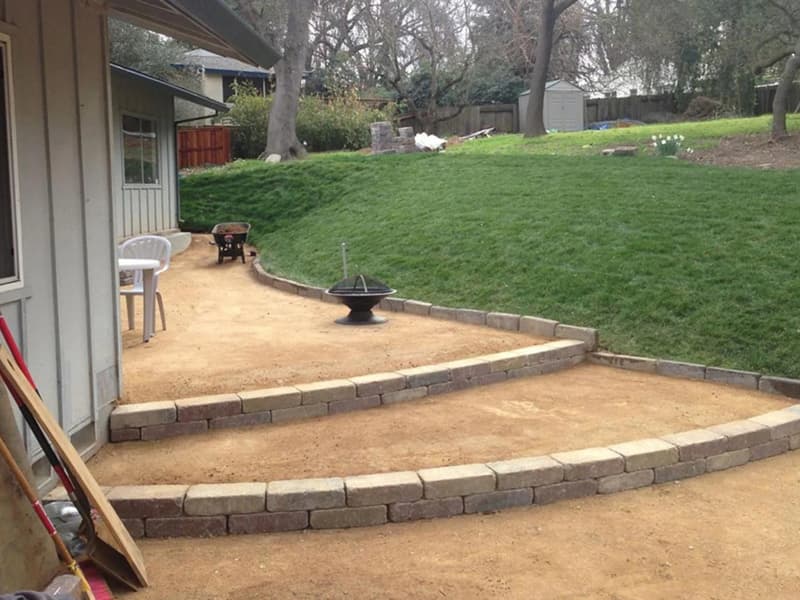
Proper yard grading and landscaping can help prevent water damage by diverting water from your foundation. Rainwater will naturally run away from the foundation and toward the street when your home is graded correctly.
Most specialists in rainwater management advise grading your yard so it slopes away from your home at a rate of 5 inches for every 10 feet. This prevents water from collecting around the foundation, which could harm it.
8. Box Gutters
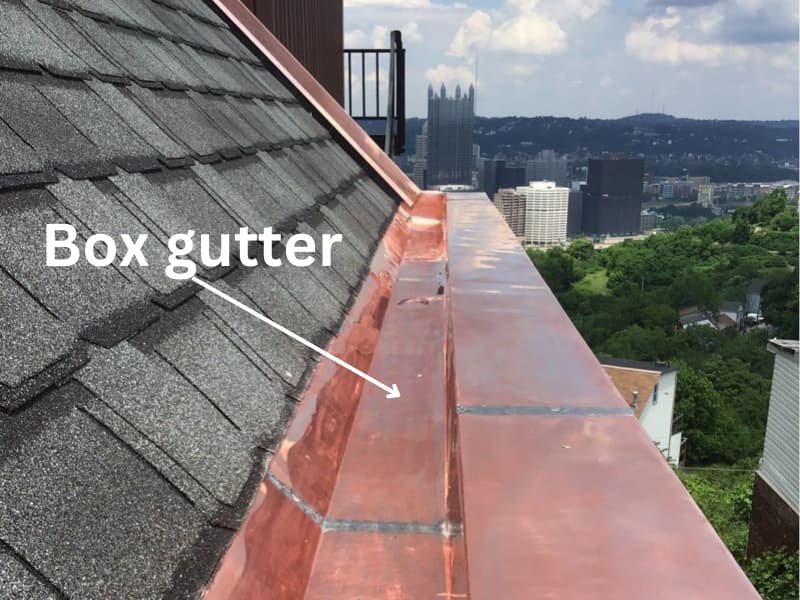
This type of gutter is a component of the roof and is often along the edge. They are common in old houses constructed in the late 1800s and early 1900s. They are also common in flat-roofed houses and commercial structures.
By diverting rainfall away from the house, a box gutter system aids in preventing water damage to the roof and fascia boards. However, unlike conventional standard gutters, they don’t hang from the edge of the roof and, instead, make up part of the roof itself.
Due to the requirement to completely reconstruct the roof, placing them on an existing roof would be pretty costly. However, they are more significant and less likely to clog and block.
9. Rain Barrels
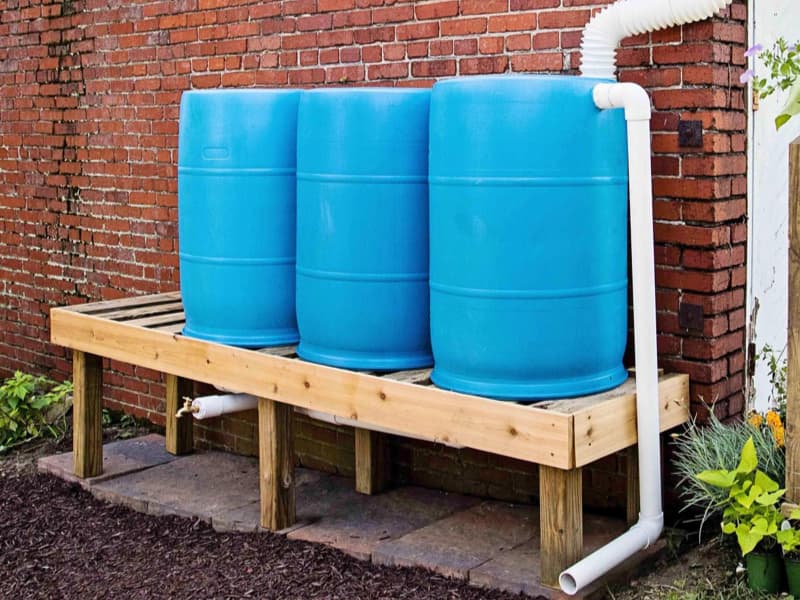
Rain barrels are available in a wide range of sizes and designs. They are positioned beneath downspouts to collect rainwater from roofs, gutters, balconies, or other hard surfaces.
Rain barrels use gravity to transport water to a garden hose or irrigation system. Depending on the hose faucet’s location, installing a diverter kit will allow you to pump water to a different region of your yard.
10. Built-in Gutters
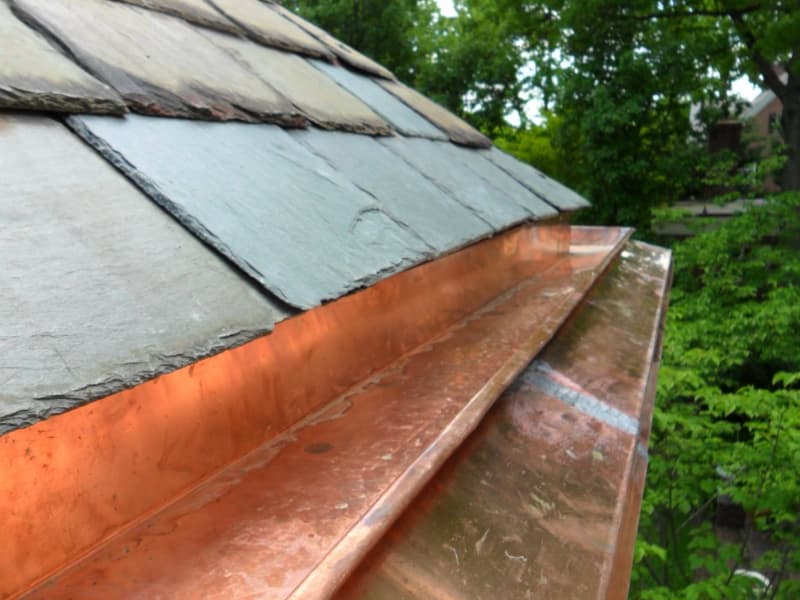
Gutters installed behind the scenes include built-in or hidden channels. In most cases, they are mounted on the underside of the roof eaves and concealed inside or beneath the overhang.
For individuals who desire the usefulness of gutters without their unattractive appearance, hidden gutters are a great choice. Since debris has a more challenging time getting to them, they are also less prone to clogging. However, they are more difficult to install and costlier than conventional gutters.
With these alternatives to gutters, you can avoid the common types of gutter damage, increase your cube appeal, and protect your house against damage by water.
Can I build a house without a gutter?
Despite our efforts to prove otherwise, many professionals agree that gutters are necessary; unless you live in a region with little rainfall, you shouldn’t skimp on them.
While there are various ways to manage rain drainage without gutters, the best gutters channel water away from your home’s foundation and don’t leave pools of water around it.
The finest gutter alternatives, however, are the ten ideas listed above. Ensuring rainwater runs away from your home’s foundation is crucial to consider when placing one or more on your house.
